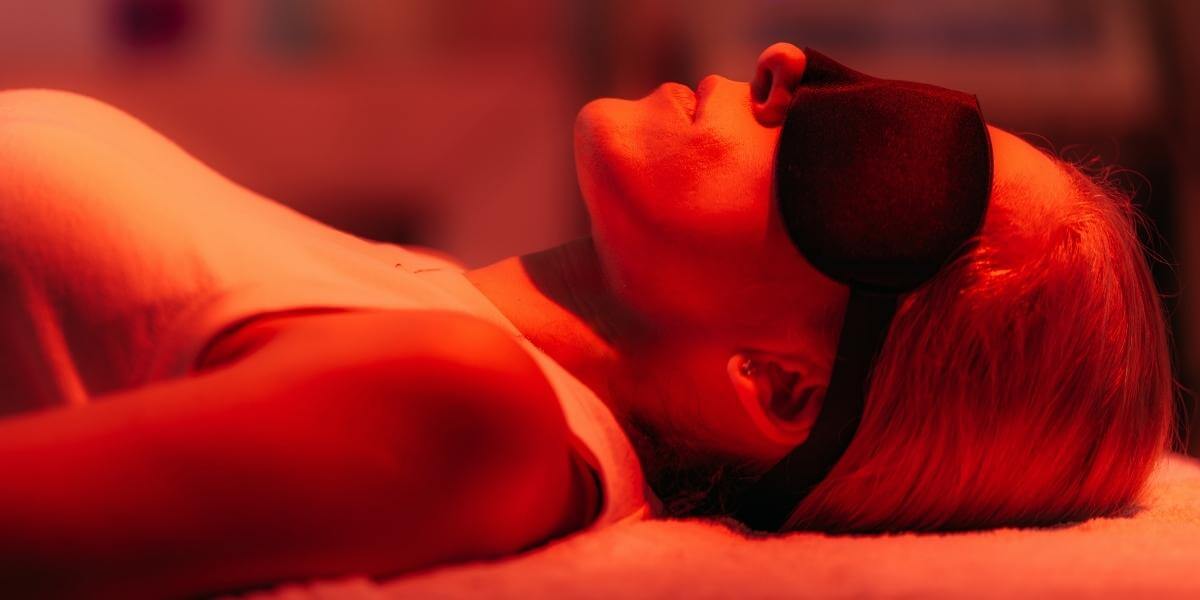5 Ways to Reduce Stress & How Red Light Therapy Can Help
April is Stress Awareness Month, which means it’s a perfect time to think about stress and its impact on health, both your health and that of your loved ones. As you may know, a bit of stress is actually healthy, and even helpful.However, it can quickly become overwhelming and ongoing, negatively impacting your health and leading you toward complete burnout. So, before thinking about your stress levels, stressing you out even more, let’s go over some ways you can help reduce it and how red light therapy can help!
Tips for Reducing Stress
Wellness is important, and one major way to improve yours is by minimizing stress. This means cutting down stressors that are impacting your life and finding activities that help you unwind and calm down. Beyond making you feel better in the immediate moment, stress-busting activities help counteract the harmful effects of stress, including increased risk of mental health disorders and physical health concerns, like anxiety, depression, and heart disease.
Aim to include stress-reducing steps within your life, such as these:
1. Change Your Day-to-Day Life
This may seem obvious, but most of us rarely put any effort into doing it: look for ways to keep stress from developing in the first place. That means placing greater importance on things like advanced planning, following a good routine, and breaking large projects down into smaller chunks. By keeping on top of things and not procrastinating, you can help to prevent stressful situations. When you can, learn to say no or create boundaries with certain activities and people that would add stress to your life.
While unexpected, stressful situations are still sure to pop up, taking these steps can help minimize the overall amount of stress, as the day-to-day stressors will be more controlled.
2. Follow a Healthy Lifestyle
Consuming a balanced, healthy diet and regularly exercising helps beat physical and emotional stress. This means taking in whole natural foods as much as possible, while minimizing highly processed ones. Consider adding foods or supplements with magnesium, B vitamins, vitamin C, omega-3 fatty acids, or other stress-reducing nutrients/supplements — and always run the use of your chosen supplements by a health professional first. Further, a healthier lifestyle may mean reducing or cutting certain things that may contribute to stress such as caffeine.
Physical activity helps beat stress, while being sedentary fuels it. Joining exercise classes or taking a short walk during the day – or after work – can make an impact on your stress levels. Even getting out and running around with your children or grandchildren can be a great physical activity!
3. Find Social Support
Connect with people in ways you find enjoyable to help yourself relax and have fun. This means not overextending yourself and choosing the right people and situations. Also, it’s good to have supportive people in your corner who can listen and be there for you when you need to share what bothers you. While talking helps with stress, touch does as well. You may also find stress relief from pets or other furry friends.
4. Try Relaxation and Stress-Busting Techniques
Find the self-care and calming techniques that work best for you. These can be public classes, private classes, or even activities that you do within your own home. They should help you release tension, unwind, and, most importantly, make you feel better. Some approaches to research and consider are:
- Deep breathing
- Meditation/mindfulness
- Yoga
- Taking a bath
- Spending time in nature
- Laughing
- Listening to calming music
5. Seek Support From Health Professionals
Sometimes, stress is difficult to manage on your own, with friends and family, or you might struggle to deal with contributors to stress or its consequences. In these cases, health professionals can provide support. Here are a few options to consider:
- A massage therapist to provide soothing massages
- A biofeedback therapist to help you understand your body’s reactions and how to calm them
- A mental health professional to talk about sources of stress and how to manage them, as well as support you, if you have a mental health disorder, like anxiety or depression
- A sleep specialist, if stress is interfering with sleep or a lack of sleep is causing more stress
- A light therapy provider who can administer stress-relieving therapy
How Red Light Therapy Helps With Stress
Stress doesn’t just refer to that high-strung feeling you get when life is overwhelming. It also impacts your body through mechanisms, like stimulating stress hormones to flow. One problem is called oxidative stress, which happens when two types of molecules, free radicals, and antioxidants, are out of balance. Oxidative stress damages fatty tissue, protein, and even DNA within the body. This problem contributes to aging and diseases, including cancer. This imbalance isn’t as much caused by mindset, as it is by external and behavioral factors, like exposure to certain chemicals and pollutants, smoking cigarettes, and an unhealthy diet.
Making an effort toward a healthier lifestyle and minimizing exposure to chemicals can help with the problem of oxidative stress. In addition, red and near-infrared light therapy is a tool you can use to counteract oxidative stress, reduce inflammation, and promote healing in the body. The wavelengths of red light are absorbed into cells to stimulate metabolic energy processes and support against stress. Red light therapy offers a variety of benefits, as it is: is painless, non-invasive, has no side effects, can be combined with other therapies, and more. TheraLight light beds provide full-body red light therapy to encourage the balancing of free radicals and healing within the body.
Take advantage of this non-invasive healing method by finding a TheraLight provider in your area.
This blog was originally published on May 11, 2020, and was late updated on April 11, 2022.

